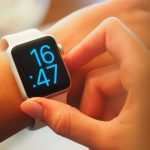In the highly competitive landscape of mid-range smartphones, two standout choices have emerged: the Samsung Galaxy A54 and the Xiaomi Redmi Note 12 Pro. Both devices offer a similar feature set, but they come with some notable differences that could sway your decision. In this direct comparison, we’ll dissect these distinctions and assist you in determining which one aligns more closely with your requirements.
Design and Build Quality
The design of both phones is unassuming but functional. They feature flat backs and plastic frames, although the Samsung has a rounded frame, while the Xiaomi’s is flat. The Redmi Note 12 Pro’s taller and lighter form factor is a result of its larger 6.67-inch screen, in contrast to the Galaxy A54’s 6.4-inch display. The Redmi device also boasts Dolby Vision support in addition to HDR10+, giving it an edge in the display department. However, the Galaxy A54 offers better Ingress Protection with an IP67 rating for water submersion, while the Redmi settles for an IP53 rating for splash-proofing.
Also Read: Comparing Samsung Galaxy A34 and Samsung A54: Which Offers Better Value?
Audio and Connectivity
Both phones come with stereo speakers that offer good loudness, but the Galaxy A54 stands out with a more balanced sound profile. The Redmi Note 12 Pro scores points for retaining the increasingly rare feature of a headphone jack, making it convenient for those who prefer wired audio.
On the other hand, the Galaxy A54 relies on an adapter for traditional headphone use. Additionally, the Redmi boasts an IR blaster, allowing it to function as a remote control for various appliances, a feature not present on the Galaxy A54.
However, Samsung makes up for this with its MicroSD expandable storage option, providing users with more flexibility in terms of storage expansion.
Software and Updates
Regarding the software, the Galaxy A54 operates using Samsung’s 1 UI layered atop Android 13, whereas the Redmi Note 12 Pro employs Android 12 with Xiaomi’s MIUI interface overlaid. Both provide a unique organization and aesthetic on top of the familiar Android core.
Samsung takes the lead in terms of software support by committing to providing four additional OS updates, while Xiaomi promises only two. This extended support ensures longer-term usability and security for the Galaxy A54.
Also Read: Redmi 12 5G: Upcoming Xiaomi Smartphone
Performance and Gaming
Neither of these phones features a Qualcomm chipset. The Galaxy A54 comes equipped with an Exynos 1380 chipset, while the Redmi Note 12 Pro utilizes a MediaTek Dimensity 1080 chipset. Both chips support 5G capabilities, with the Galaxy edging ahead in benchmarks by 10 to 20% in both CPU and GPU performance.
However, it’s worth noting that neither phone is a gaming powerhouse, and the difference in performance is not substantial.
Battery Life and Charging
Both phones are equipped with a 5,000 mAh battery, yet the Galaxy A54 excels in extracting superior battery performance, showcasing an impressive endurance rating of 119 hours, whereas the Redmi achieves 97 hours in this regard.
However, the Redmi Note 12 Pro takes the lead when it comes to charging speeds, supporting 67W charging with an included charger, while the Galaxy A54 supports 25W charging but lacks an included adapter.
Xiaomi’s device can charge from 0 to 78% in half an hour, while Samsung reaches 56% in the same time frame.
Camera Capabilities
The camera setup is where the Galaxy A54 shines. The Samsung Galaxy A54 features a primary camera with a 50-megapixel sensor, along with a 12-megapixel ultra-wide lens and a 5-megapixel macro lens. In contrast, the Xiaomi Redmi Note 12 Pro comes equipped with a 50-megapixel primary camera, an 8-megapixel ultra-wide lens, and a 2-megapixel macro lens.
The Galaxy provides small advantages across the board, particularly in primary camera performance and selfie quality, thanks to its 32-megapixel front-facing camera, which outperforms the Redmi’s 16-megapixel selfie camera. Additionally, the Galaxy has the capability to capture selfie videos in 4K resolution, whereas the Redmi Note 12 Pro is restricted to 1080p resolution for selfie videos.
Also Read: Huawei Nova 11 Pro – A Mixed Bag of Selfie-Centric Upgrades
Samsung Galaxy A54 vs. Xiaomi Redmi Note 12 Pro
| Feature | Samsung Galaxy A54 | Xiaomi Redmi Note 12 Pro |
|---|---|---|
| Design and Build Quality | – Flat back, rounded frame | – Flat back, flat frame |
| – IP67 water resistance | – IP53 splash-proofing | |
| Display | – 6.4-inch OLED, 120Hz | – 6.67-inch OLED, 120Hz |
| – HDR10+ | – HDR10+ and Dolby Vision | |
| Audio and Connectivity | – Stereo speakers, balanced | – Stereo speakers |
| – No headphone jack | – 3.5mm headphone jack | |
| – MicroSD expandable storage | – IR Blaster | |
| Software and Updates | – Samsung 1 UI, Android 13 | – MIUI, Android 12 |
| – Four more OS updates promised | – Two more OS updates | |
| Performance and Chipset | – Exynos 1380, 5G capable | – MediaTek Dimensity 1080, 5G capable |
| – Slightly better benchmark performance | – Good benchmark performance | |
| Battery Life and Charging | – 5,000 mAh battery | – 5,000 mAh battery |
| – Endurance rating: 119 hours | – Endurance rating: 97 hours | |
| – 25W charging, adapter not included | – 67W charging, adapter included | |
| Camera Setup | – 50MP main, 12MP ultra-wide, 5MP macro | – 50MP main, 8MP ultra-wide, 2MP macro |
| – 32MP front-facing camera | – 16MP front-facing camera | |
| – 4K selfie video recording | – Limited to 1080p selfie video | |
| Price | – Varies by region and carrier | – Budget-friendly |
The Verdict
Ultimately, your choice between the Samsung Galaxy A54 and the Xiaomi Redmi Note 12 Pro hinges on your individual preferences and priorities. The Galaxy offers better Ingress Protection, longer software support, expandable storage, and slightly superior camera capabilities, particularly for selfies.
On the other hand, the Redmi Note 12 Pro boasts a larger screen, a headphone jack, an IR blaster, faster charging, and a more budget-friendly price tag. It’s a tough decision, but both devices have their unique strengths, making them worthy contenders in the mid-range smartphone market.

We are the founders of Techspurblog and we have been in this industry for over Four years. We pride ourselves on being the global leader in developing Technology Blog, which can create original content.
We are a team of enthusiastic people who want to share our experience, knowledge and enterprise with the world. We love what we do and we hope you will too!





